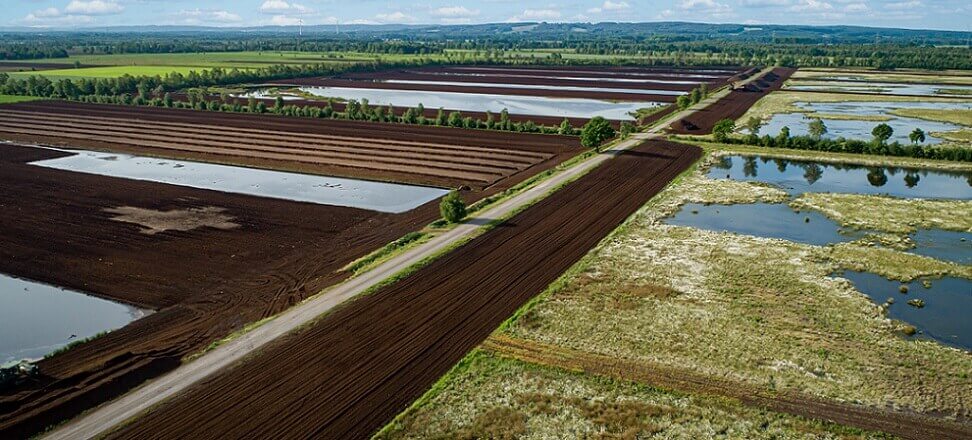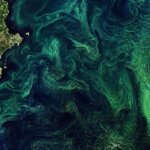The canonical phrase of the Hippocratic Oath, “Prevention is better than cure,” although formulated nearly 2,500 years ago, has not lost its relevance, and in perhaps all areas of life. Also in ecology. This is because it is often the case that once a degraded ecosystem, despite the expenditure of forces and resources for its restoration, it does not return to its initial state. One of the more telling examples of such ecosystems whose “treatment,” while necessary, may not work, are drained peatlands.
Untransformed (swampy) peatlands provide numerous ecosystem services. First of all (and importantly in an era of climate change), they absorb carbon dioxide from the atmosphere, accumulating carbon in peat, making them the largest terrestrial store of organic carbon. Despite occupying only 3% of all land area, they are estimated to store 600 ± 100 Gt of carbon, accounting for 30% of the world’s carbon retention in soils. In addition to carbon dioxide, peatlands also absorb nutrients and pollutants, helping to improve water quality. They also regulate quantitative relations. By storing water during periods of excess and releasing it during periods of shortage, they function like natural sponges or retention reservoirs. Thus, they slow down surface runoff, reduce erosion and help reduce flood waves. They also harbor specific, highly specialized and unique flora and fauna.
Over the past centuries, the world has drained around 500,000 km² of peatlands, i.e. 10 – 15% of their area, mainly for agriculture, peat mining and forestry. This process has historically occurred mainly in temperate and boreal climate regions, but is also observed in the tropics. Temperate zone peatlands in particular, which often become a productive, nutrient-rich area when drained, have been drained for agriculture on a significant scale. As a result, many temperate zone peatland species are globally threatened due to habitat loss. In Poland, drainage affects as much as 86% of all peatlands, resulting in an estimated 1.26 million hectares of drained wetlands[1].
Drainage of peatlands impairs the ecosystem services they provide or deprives them of them altogether. What is bound in the hydrated peat is released from the drained one. Its mineralization leads to continuous land subsidence and release of nutrients, which intensifies eutrophication of surface and groundwater. As a result of peat oxidation, carbon dioxide is released. It is estimated that drained peatlands are responsible for about 5% of global anthropogenic greenhouse gas emissions, and by 2100. The share could grow to 12 – 41% of the emission budget[2]. Re-wetting drained peatlands can significantly reduce or stop carbon loss and lead to resequestration.
The need, or rather the necessity, of restoring wetlands, including the regeneration of drained peatlands by means of re-wetting them, stems from a number of international programs and documents. This action is in line with Objective 12. The Ramsar Convention’s Fourth Strategic Action Plan, which identifies the need to restore degraded wetlands to protect biodiversity, reduce disaster risk, improve livelihoods, and mitigate and adapt to climate change. Wetland restoration is also an important component of the European Union’s 2030 Biodiversity Strategy. It is also in line with the Paris Agreement’s goal of achieving carbon neutrality by 2050 – 2070. Reducing carbon dioxide emissions, by rehydrating drained peatlands and restoring their natural functions, will significantly contribute to achieving this goal. Over the past 30 years, thousands of hectares of drained land in Europe, North America and other parts of the world have been re-watered.
Unfortunately, in the case of peatlands that have been heavily degraded and drained for a long time, rewetting may not restore natural conditions, not only in the short term, but even within decades. This is evidenced by the results of a comparison of the characteristics of 320 re-wetted and 243 natural temperate zone peatlands of different regions of Europe, conducted by an international team of scientists (also from Poland) and published in 2021. In the pages of Nature Communications[3].
Their results indicated that re-wetted peatlands differed in structure and functioning from near-natural peatlands, particularly in terms of biodiversity, plant community composition and geochemistry. Re-wetting induces the development of tall, graminoid wetland plants, such as broad-leaved Typha latifolia and reed canary grass Phalaris arundinacea, or so-called “graminoids. Heliophytization of vegetation. In contrast, mosses of the genus Sphagnum, with high peat-forming potential and the greatest water-retention capacity, are absent or rare in such helo-phyte-dominated, hydrated peatlands. More than half of the areas also showed no tendency to return to their original biodiversity and ecosystem functioning even decades after restoration work was undertaken.
Researchers from Denmark also came to similar conclusions, analyzing 10 peatlands in the Odense River catchment that underwent restoration between 2001 and 2011[4]. They found that in most areas different types of grassland communities developed, with very little contribution from natural peatland vegetation communities, and this regardless of the period since the peatland was re-wetted.
One of the main factors hindering the restoration of natural plant communities is persistently high nutrient levels. In re-wetted peatlands, nutrient availability is usually much higher than in natural peatlands, mainly due to mineralization of organic matter, fertilization of the area and release of bound phosphorus after re-wetting. Also, the limited dispersal of wetland plant species hinders the recovery of original communities. As a result, rapid regeneration of plant communities to their pre-drainage state is possible primarily in ecosystems that are slightly disturbed, while those that are severely degraded are unlikely to ever reach their pre-drainage state.
Changing the species composition of vegetation not only affects biodiversity, but also affects the cycling of carbon and other substances in the ecosystem. Heliophytes, thanks to being equipped with air tissue – aerenchyma – efficiently conduct gases, including methane, and can become its emitter from the substrate to the atmosphere. While rewetting clearly reduces carbon emissions by inhibiting peat mineralization, assessing the total greenhouse gas balance requires further comparative studies that take into account different types of developed vegetation.
While peatland restoration may not provide the same range of ecosystem services that natural ecosystems provide, it does provide a number of benefits. First of all, re-wetting drained peatlands is a way to increase water retention at the basin scale. Based on a series of irrigation works on drained peatlands of the Nemunas basin, Stachowicz and co-authors[5] showed an increase in water retention in the basin of almost 1% of the total annual runoff, and the costs associated with the necessary work directed at the construction of various types of damming facilities were generally found to be lower than the benefits associated with the monetary value of the retained water.
So, draining peatlands is not only the disappearance of ecosystems of interest to naturalists. It’s also an increase in carbon emissions, a worsening of the drought and the loss of a significant element of biodiversity. As the cited examples indicate, the restoration of these habitats, usually quite costly and requiring many technical measures, even if it yields decidedly positive results, will not fully restore their original values. In conclusion, another guiding principle of medicine can be cited: “Primum non nocere” (First, do no harm).
In the article, I used, among others. From the works:
[1] Kotowski W. 2021. Estimating greenhouse gas emissions from organic soil use in Poland and the potential for reduction. WWF Poland Foundation.
[2] Leifeld J., Wust-Galley C., Page S., 2019. Intact and managed peatland soils as a source and sink of GHGs from 1850 to 2100. Nat. Clim. Change 9, 945-947, https://doi.org/10.1038/s41558-019-0615-5.
[3] Kreyling J, Tanneberger F, Jansen F, et al. 2021. Revetting does not return drained fen peatlands to their old selves. Nature Communications, 12(1):5693. DOI: 10.1038/s41467-021-25619-y.
[4] Baumane M., Zak D.H., Riis T., Kotowski W., Hoffmann C.C., Baattrup-Pedersen A., 2021. Danish wetlands remained poor with plant species 17-years after restoration. Science Of The Total Environment, 798, 149146, https://doi.org/10.1016/j.scitotenv.2021.149146.
[5] Stachowicz M., Manton M., Abramchuk M., et al, 2022, To store or to drain – To lose or to gain? Revetting drained peatlands as a measure for increasing water storage in the transboundary Neman River Basin. Science of The Total Environment, 829, 154560, https://doi.org/10.1016/j.scitotenv.2022.154560.

 Polski
Polski






